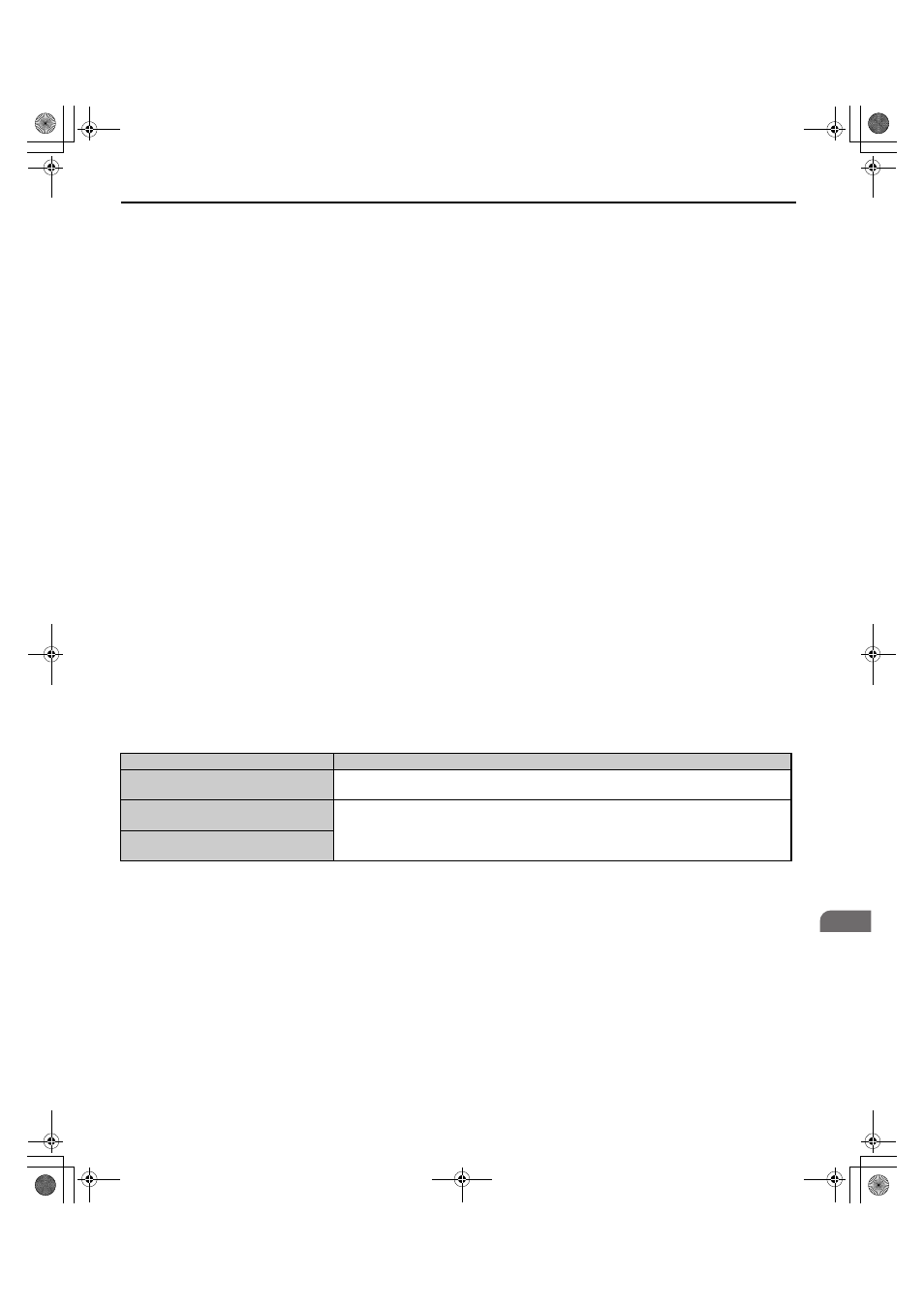Leveling distance control – Yaskawa CIMR-LU Drives User Manual
Page 103

4 Start-Up Programming & Operation
YASKAWA ELECTRIC TOEP C710616 38F YASKAWA AC Drive L1000A Quick Start Guide
103
S
tart-U
p
Prog
rammin
g
&
Op
er
at
io
n
4
■
Leveling Distance Control
Leveling Distance Control uses the accel/decel rate, jerk settings, and stopping distance to automatically calculate a speed
sequence and arrive at the designated floor with increased accuracy. Two types of Leveling Distance Control are available
that allow the user to select the Stopping Method (S5-10).
WARNING! Inadvertent Movement Hazard. The elevator will not stop at the designated location and an overrun will occur which may
cause injury to personnel if parameters o1-20, S5-11, and S5-12 are set incorrectly. Before using Leveling Distance Control, make sure
that parameters for Traction Sheave Diameter (o1-20), Deceleration Distance (S5-11) and the Stop Distance (S5-12) are set to the
correct units.
Note: Leveling Distance Control should be used only for elevators with a constant stopping distance. Do not use Leveling Distance
Control in elevators where the stopping distance changes frequently.
The following functions are disabled when Leveling Distance Control is selected:
• Switching between deceleration times
• Droop Control (b7 parameters)
• Shoot Floor, Advanced Short Floor (S5-01 = 1, 2)
Leveling Distance Control is disabled when any one of the following functions are selected:
• Analog frequency reference
• Rescue Operation
• Inspection Operation
• During Motor 2 selection
Direct Landing
Direct Landing (S5-10 = 1) is activated at the start of deceleration, and brings the elevator car to the designated floor
without the use of the leveling speed.
Direct Landing disables Leveling Distance Control, and uses a speed reference calculated by multiplying E1-04 times S5-
13. If a Stop distance correction command (H1-
= 5C) is triggered during Direct Landing, then the drive will switch
to the stop distance set in S5-12 for the remaining distance. Direct Landing will end once data from the encoder indicates
that the stopping distance is 0.
illustrates a Direct Landing Operation example.
Table 31 Conditions for Direct Landing
Speed Priority
Direct Landing Start Conditions
Multi-step speed sequence
(d1-18 = 0, 3)
Speed reference
≥ E1-04 × S5-13 and the Up/Down command is not active or the speed reference is
0.
High speed reference has priority
(d1-18 = 1)
The Up/Down command is not active, the speed reference is 0, or the leveling speed reference has
been selected by one of the multi-function input terminals (H1-
).
Leveling speed reference has priority
(d1-18 = 2)
TOEP_C710616_38F_5_0.book 103 ページ 2013年12月4日 水曜日 午前9時56分